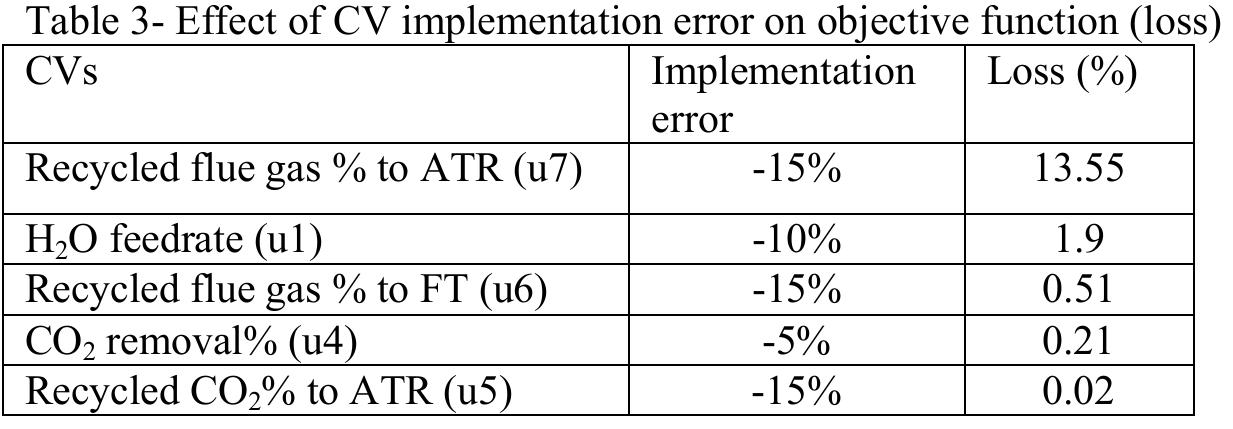Figure 3 – uploaded by Mehdi Panahi

Figure 5 - Effect on operation of changes in flowrate of natural gas feed. Fig. 6- Relation between reoptimized oxygen flowrate and natural gas flowrate OU FO The flowrate of natural gas is allowed to change +10%. Fig.5 shows the value of reoptimized objective function when we let to al (solid line), The do optimal nominal poi the six unconstrained DOFs vary ted line shows the value if we keep all DOFs constant at their ints. We see that if the flowra e of natural gas increases by 10%, then the simple policy with constant DOFs gives a 20.6% loss in liquid fuel production, which is not accepta ble. We also considered the op found that the largest variation was in the oxygen we may attempt to let the other DOFs be constant. in Fig. 5 that if we oxygen flowrate, then we have an acceptable loss there are other disturbances, so it is too early to conclude that we can keep all these DOFs constant. imal variation in the six DOFs, and flowrate (Fig. 6). This suggests that ndeed, we see from the dashed line keep all DOFs (u;) at their optimal nominal points, except for the 1.3%) in the worst case. However,






